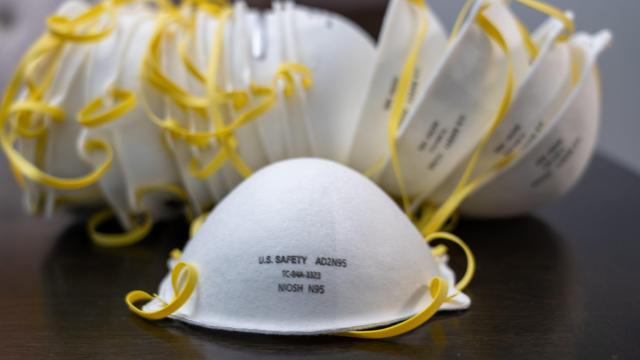Since we all know cloth masks don’t cut it anymore, hopefully you’ve gotten some of the good kind — N95, KF94, or similar. But even the best mask isn’t protecting you if it doesn’t fit right, or if you’re wearing it wrong. So here are some tips on getting the best protection from those high quality masks.
Put it on correctly
Your first step is to follow the instructions on your mask. Yes, it should come with instructions — and if it doesn’t, look up the type of mask to find out what’s recommended. (You can find instructions for U.S.-approved masks here.)
Respirators have two straps, often adjustable. Hold the mask against your face in one hand while you use the other to position the straps. According to the CDC and the National Institute for Occupational Safety and Health (NIOSH):
-
The bottom strap should go below your ears and around the back of your neck.
-
The top strap should go at the top back of your head, above your ears.
-
The straps should not cross each other.
After you put the mask on, use both hands to press the metal nose clip or wire around the sides of your nose. The idea is to get a complete seal against your face, without any air leaking through gaps around your nose or cheeks.
When removing the mask, don’t hold the front of the mask with your hand (because it might be contaminated). Do remove the bottom strap first, by pulling it up and over the top of your head, then the top strap.
Check the fit
In jobs where people need to wear respirators, workers are often required to do formal fit tests. But if you’re just strapping on a mask at home, there are still ways to test whether it fits correctly.
Start by cupping your hands around the mask (this is a clean mask, one that you have just put on). When you quickly breathe in, you should feel the mask sealing onto your face. And when you breathe out, you should not be able to feel any leaks around the edges.
If you detect leaks around the top of the mask, adjust the nosepiece. And if you feel any around the bottom or sides, adjust the straps. For a demonstration, check out this video from the Occupational Safety and Health Administration.
Keep the edges clear
It’s hard to get a good seal if anything is sandwiched between your skin and the edges of the mask. Facial hair is notorious for disrupting respirator seals, so be aware that you won’t get as good a seal if you have a beard as if you are clean-shaven.
The same goes for stray hair from your head; make sure your hair is pulled back or otherwise out of the way. Glasses and jewellery can also interfere with a close fit, so consider taking off your glasses while you adjust your mask, and pay attention to whether your earrings, nose rings, or any other accessories are getting in the way of the mask’s seal or straps.
Find your favourite brand
Since different respirators are made slightly differently, you may find that one model or size fits you better than another. If you have trouble with certain brands, shop around and stick with the one that gives you the best seal. And, yes, you can reuse the same one if you need to.

Leave a Reply
You must be logged in to post a comment.